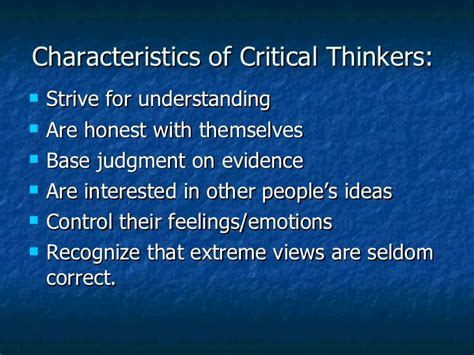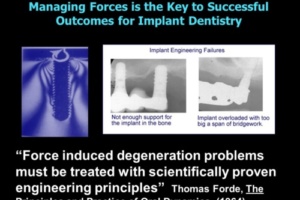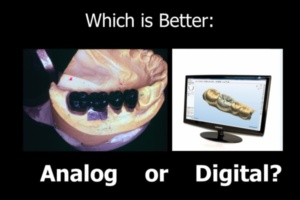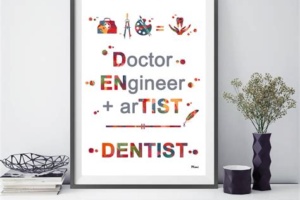
Single Tooth Implants: The Signature of a Piecemeal Approach to Patient Care
This week’s blog is about a trend in our profession that has disturbed me for quite some time. There are less dentists today who are critical thinkers than ever before. There is a disturbing trend for dentists to adopt a piecemeal approach to dentistry rather than an overall approach to dentistry. A piecemeal approach to dentistry only looks at filling a hole or a space. Naturally the piecemeal approach is what insurance companies love to pay for. With the economic downturn, today’s dentists are looking to make a quick buck wherever they can, and they love simple, lucrative procedures that fill a hole or a space. One procedure that fulfills this desire is the single tooth implant. I think the single tooth implant is the poster child for the piecemeal approach to dentistry.

An overall approach, on the other hand, focusses on preventing disease and doing procedures that actually solve the patient’s problems, like eliminating recurrent decay and periodontal bone loss in a quadrant. I was trained to be a critical thinker, so I adopt the overall approach for everything that I do. I believe that this approach is sadly lacking in dental education. The proof is easily seen in the articles published in dental tabloids. Everyone reads the dental tabloids—and probably more dentists read these publications than scientific journals and textbooks. I admit to being guilty of this vice. In their defense, dental tabloids are extremely easy to read and have beautiful color pictures.
However, the tabloids are filled with piecemeal thinking—and how-to do quick, lucrative procedures. Dentists love these articles—and I myself enjoy seeing what is being done out there. There is no question that a tabloid article can provide dentists with some useful tips for their practices.
Lately, Dental Tabloids have been featuring articles on single tooth implants. The attached illustration shows examples that came from tabloid articles. A truly critical observer will notice that the teeth surrounding the implant are far from being virgin teeth. Most have big fillings, crowns or are going to need crowns. Some have obvious decay and others periodontal bone loss. The tabloids never talk about fixed bridgework as an alternative solution to the single tooth implant. While a single tooth implant is an appropriate solution if the adjacent teeth are in perfect condition, it is NOT the best solution for teeth that have already been compromised.

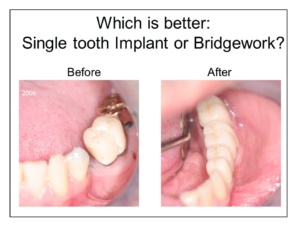
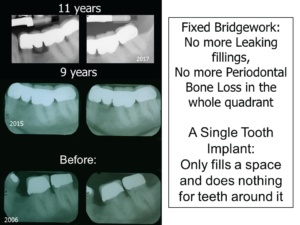
When making a differential diagnosis, dentists should consider these facts:
-
Ideal fixed bridgework can solve the patient’s problem for an entire quadrant, while a single tooth implant will just perpetuate the problems around the space. Fixed bridgework can prevent recurrent decay and compensate for periodontal bone loss to prevent future bone loss. A single-tooth implant cannot do this.
-
Ideal fixed bridgework has a high, predictable prognosis and is far less invasive and time consuming. Implant placement is surgical treatment.
-
Fixed bridgework immediately replaces the missing tooth when the provisional restoration is inserted. Implants usually require several months of osseointegration before a provisional restoration can be made.
-
Implants do not have a perfect track record for success and when they fail, they can leave behind huge defects in the bone that can affect the adjacent teeth.
-
Implant restorations made to fit around poor restorations and teeth with poor shape and form can lead to food impaction and periodontal problems. Fixed Bridgework prevents food impaction because the teeth are splinted.
-
Implant placement is not always ideal—even with guide stents—and poor placement can compromise the ultimate outcome.

